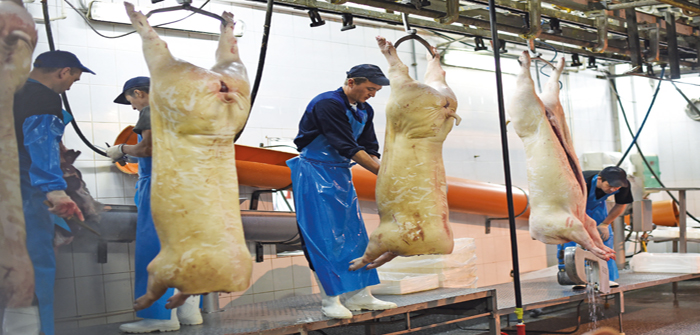After a four-month period, the ban on Canadian pork exports to China has been lifted.
The ban first came into place due to a period of high political tensions and claims that traces of ractopamine were found in Canadian shipments. The relationship between the two nations now seems to be improving, although it is not yet clear how quickly, or even if trade will return to previous levels.
During the first half of 2019, China was Canada’s largest export destination accounting for 171,000 tonnes of fresh/frozen pork. Despite the temporary interruption in trade, China is still the largest export destination for Canadian pork exports based on the first nine months of 2019, accounting for 25% of total fresh/frozen exports.
Canada is the third largest exporter to China for the year-to-date, with Spain and Germany ahead of them. The continued prevalence of ASF in China is increasing demand for pork imports. This could potentially lead to Canada’s exports to the region growing significantly, now that market access has been restored.
In contrast, there were notable increases in fresh/frozen pork imports to China from the United States and Brazil during Q3, while Canada was banned. It is unclear how much of this market Canada will be able to win back now it has regained access.
Canadian global fresh/frozen pork exports during Q3 2019 were down both compared to both the previous quarter (-33,000 tonnes) and compared to Q3 2018 (-11,000 tonnes), finishing at 213,000 tonnes. Canada does however continue to be a major net exporter of pork products.
AHDB’s trainee analyst Charlie Reeve said: “During Q3, Canada did increase export volumes to some other markets to offset some of the exports that would have previously gone to China. Export volumes to Mexico, the Philippines and Taiwan all increased significantly on the previous quarter. Shipments to the US also recorded some small increases.”
Meanwhile, AHDB has reported that total Irish exports of pig meat (exc offal) for the first nine months of 2019, were down 5% on the previous year, which was predominantly due to reductions in Irish exports to the EU.
Despite this, the continued prevalence of ASF in regions of China has helped to boost Irish exports significantly. Irish exports to China for the first nine months of 2019 increased year-on-year by 44% to reach 45,000 tonnes, according to Central Statistics Office Ireland data.
Mr Reeve added: “China’s market share of the Irish pig meat (exc offal) export market has grown from 16% to 25% on the first three quarters of the year.”




